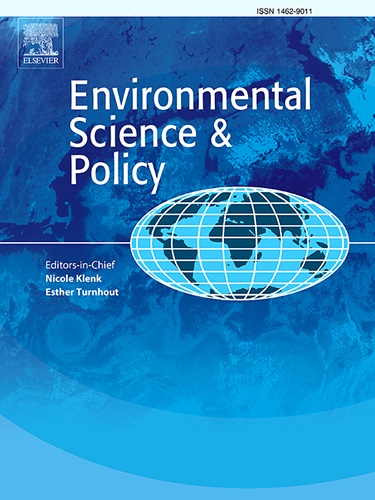大城市疏散时,环境很重要:将重点从个人特征转移到地点和社会脆弱性上
IF 4.9
2区 环境科学与生态学
Q1 ENVIRONMENTAL SCIENCES
引用次数: 0
摘要
气候变化导致极端天气、高温和洪水,越来越多的人需要撤离。最近的研究发现,疏散相关决策的决定因素并无定论,而且疏散率差异很大,尤其是在高密度地区。我们使用了法国巴黎洪灾期间地理标记疏散选择的大型数据集(n = 2976),结果表明,虽然很少涉及这些因素,但地理位置、社会脆弱性、居住年限和灾害风险是关键的预测因素。这些因素可用于推断以往经验对撤离意向的影响,而这通常很难在与决策相关的尺度上收集。我们研究了以往被忽视的多种撤离选择,包括在观察到同伴撤离或洪水临近后逐渐自发撤离,以及因基础设施中断而在受影响后撤离。我们的研究结果表明,很多人都是等到家里被洪水淹没后才撤离的。在考虑不同的撤离行为时,最初立即撤离的人与在住房被淹后仍拒绝撤离的少数人之间的差距会随着时间的推移而逐渐拉大。这种时间顺序可能解释了文献中报告的疏散率的巨大差异。然而,处于脆弱境地和面临更多危险的人更有可能宣称他们会无视撤离指示。其中一个重要的含义是,旨在降低社会脆弱性的政策可能比宣传活动更能有效地提高防灾准备和支持撤离。本文章由计算机程序翻译,如有差异,请以英文原文为准。
Context matters when evacuating large cities: Shifting the focus from individual characteristics to location and social vulnerability
Climate change is driving extreme weather, heat and flooding, which increasingly require evacuations. Recent studies have found inconclusive results on the determinants of evacuation-related decisions and have reported widely varying evacuation rates, especially in high-density areas. We use a large dataset of geotagged evacuation choices in Paris, France (n = 2976) during a flood, to show that while they are rarely addressed, location, social vulnerability, length of residence, and hazard exposure are critical predictors. They can be used to infer the impact of previous experience on evacuation intentions, which is usually difficult to collect at scales relevant to decision-making. We address multiple evacuation choices over time that have previously been overlooked, including gradually self-fueling spontaneous evacuations after observations of peers evacuating or flooding proximity and post-impact evacuation due to infrastructure disruption. Our findings reveal that many people wait until their home is flooded to evacuate. The gap between the initial share of people leaving immediately and the minority refusing to leave in any case even after their housing is flooded gradually fills when considering different evacuation behaviors over time. Such chronology might explain the wide range of evacuation rates reported in the literature. However, people in vulnerable situations and with increased hazard exposure are more likely to declare that they would disregard evacuation instructions. One key implication is that policies aimed at reducing social vulnerability might be more effective than communication campaigns to increase preparedness and support evacuation.
求助全文
通过发布文献求助,成功后即可免费获取论文全文。
去求助
来源期刊

Environmental Science & Policy
环境科学-环境科学
CiteScore
10.90
自引率
8.30%
发文量
332
审稿时长
68 days
期刊介绍:
Environmental Science & Policy promotes communication among government, business and industry, academia, and non-governmental organisations who are instrumental in the solution of environmental problems. It also seeks to advance interdisciplinary research of policy relevance on environmental issues such as climate change, biodiversity, environmental pollution and wastes, renewable and non-renewable natural resources, sustainability, and the interactions among these issues. The journal emphasises the linkages between these environmental issues and social and economic issues such as production, transport, consumption, growth, demographic changes, well-being, and health. However, the subject coverage will not be restricted to these issues and the introduction of new dimensions will be encouraged.
 求助内容:
求助内容: 应助结果提醒方式:
应助结果提醒方式:


